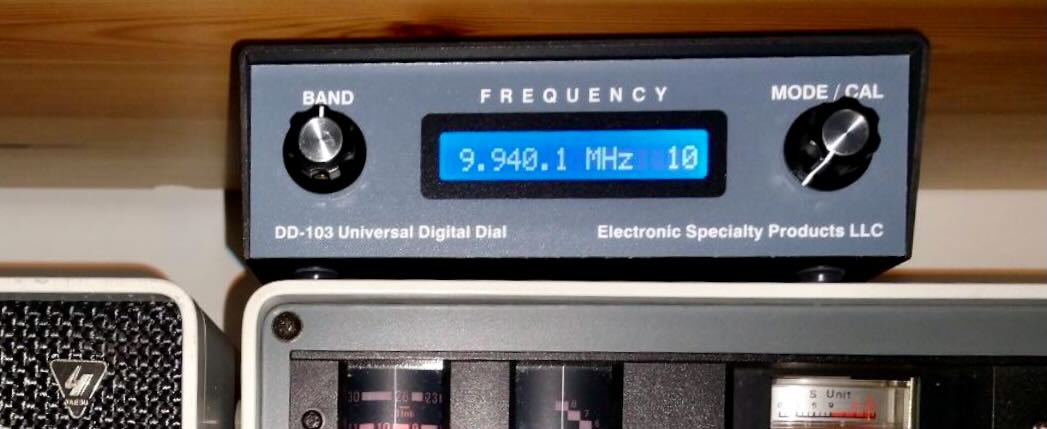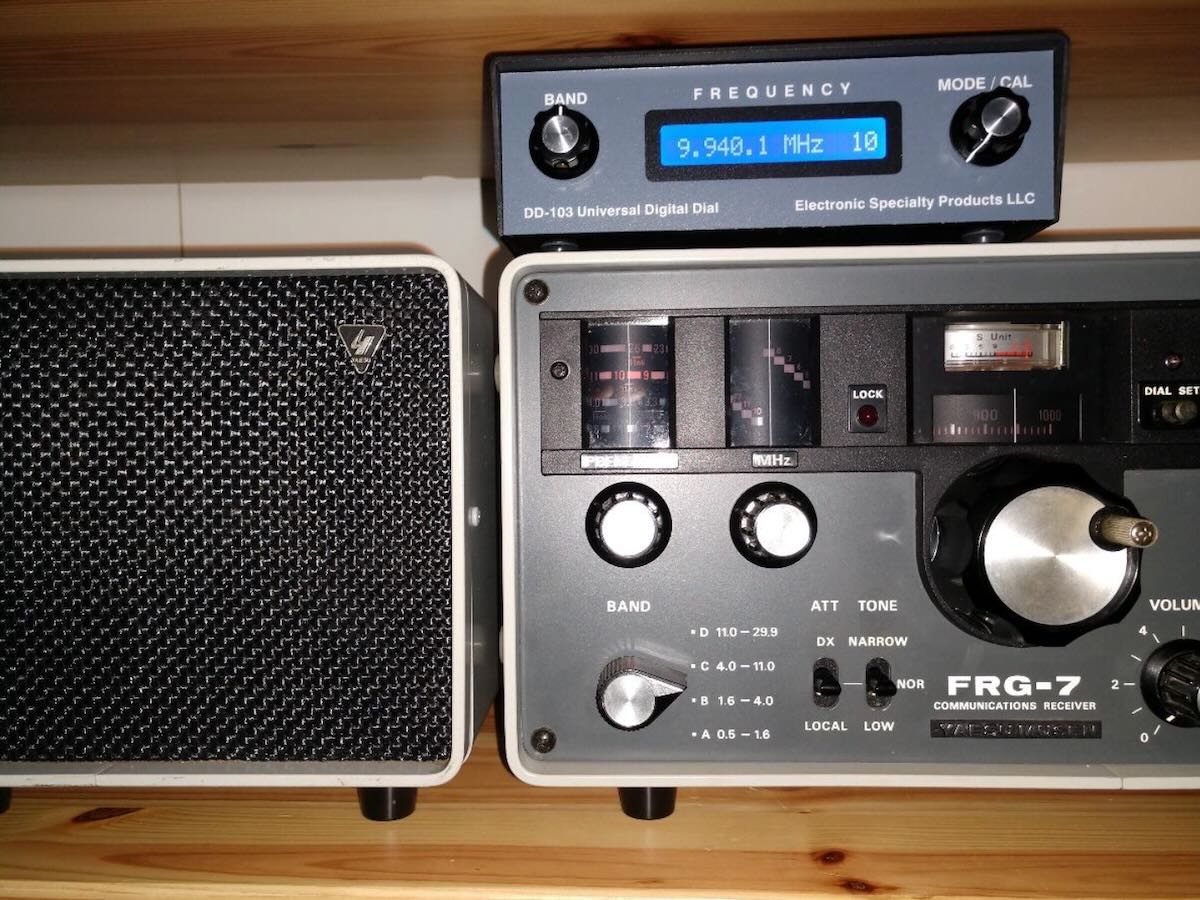 Many thanks to SWLing Post contributor, Bob Butterfield, who shares the following guest post:
Many thanks to SWLing Post contributor, Bob Butterfield, who shares the following guest post:
Review of the Electronic Specialty Products – Model DD-103 Universal Digital Dial
by Bob Butterfield
I recently brought out of storage my Yaesu FRG-7 Communications Receiver to use “in the shack” once again. I have always regarded the FRG-7 as a capable receiver but just did not have space as my radios co-exist with part of my daughter’s over-flowing stuffed animal collection–among other things. After a couple of dozen members of the plush collection were relocated, I now had room for another receiver! I checked the FRG-7 out carefully and found everything was functioning well, except for a modification I made decades ago which was the installation of a 100 kHz crystal calibrator kit inside the receiver.
I am the original owner of this FRG-7 which is an early production unit (the one without the small fine tuning knob). I had always desired an external digital frequency display for this radio and thought now is the time. I did some research, visited various radio forums, and decided on purchasing an Electronic Specialty Products (ESP), Model DD-103 Universal Digital Dial. This unit is not cheap, US$140, plus $15 shipping, but seemed to fit my needs. If technically inclined, one could possibly build an external display for themselves at lower cost. What may be of interest to many concerning the DD-103 unit is that it comes pre-programmed for dozens of transceivers and receivers (to include the FRG-7). Plus, if your radio is not pre-programmed it can be set up manually.
The DD-103 is an attractive compact external unit measuring 2”H x 6”W x 4”D with a very easy to read backlighted LCD (white on blue). The unit comes with connecting cables, U.S.-type power supply, and instruction manual. In my opinion, despite its size, this is one solid and well-built unit. As per the ESP web site, new units are not stocked but are assembled upon order. After ordering I immediately emailed ESP with my receiver make and model (I would recommend this for all buyers). My unit arrived in a little over two weeks and I received a separate sheet accompanying the unit with specific instructions for my receiver. Hook up was a breeze. All that was needed was to set a few DIP switches, connect one lead to the indicated test point on the identified board, and the other lead to chassis ground (alligator clip leads are provided). The connection to the display is made with the included RCA cable. I made one simple installation modification, installing a RCA female/RCA female bulkhead connector on the rear panel of the FRG-7 to allow for quick disconnect.
The DD-103 display is programmed into 1 MHz increments. To operate, you select the MHz range you want (for example 9 MHz) on the DD-103. On the FRG-7, I then tune its pre-selector and the same desired MHz range, and finally tune in the frequency and watch the DD-103 display change accordingly. The operational design of the DD-103 fits nicely with the Barlow-Wadley circuit design of the FRG-7.
A key feature of the DD-103 display is that it reads the entire frequency (e.g., 9.940.1 MHz) so you always know where you are with just one look. In addition to AM mode the DD-103 can be further programmed for CW, LSB, and USB modes, as well as 10 Hz or 100 Hz resolution. As stated in the unit’s manual, it can also be calibrated on each frequency range so as to correct IF amplifiers that are a little off or errors associated with aging receiver crystals, if applicable.
It is nice to have my FRG-7 up and running again and utilizing the new external numeric frequency readout. Truthfully, I have been reminded just how good the FRG-7 is. Though it does not have as many features, it holds its own when put up against my other classic receivers (JRC NRD-545, JRC NRD-535D, and ICOM R-75).
I must say I am quite happy with the Electronic Specialty Products DD-103. The unit has good accuracy and stability as it utilizes a TCXO reference oscillator. If I had to nit-pick about anything, I would likely point out that the on/off switch is on the back of the unit. If your radio is in a confined space this possibly could cause operational issues for you. Also realize that for the most part this unit is kind of a “one size fits all” package and it would not surprise me if certain receivers or transceivers might require lengthening of the connecting cable. All in all this professional looking unit is a simple to use, simple to install, easy to read, designed well, and I think worth the cost. For anyone else who is thinking about adding a digital frequency readout to a vintage radio, you may want to give this model due consideration.
Bob Butterfield
Photo of my FRG-7 with the DD-103 on top:
Web site for Electronic Specialty Products: http://www.electronicspecialtyproducts.com/dd103.html
Disclaimer: I have not been compensated in any manner in regards to this unsolicited review and purchased the DD-103 unit with my own funds.

